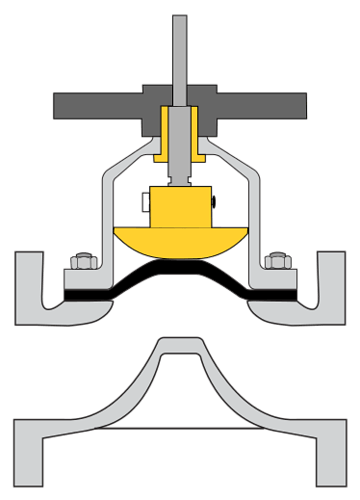Diaphragm valves (or membrane valves) consist of a valve body with two or more ports, a diaphragm, and a saddle or seat upon which the diaphragm closes the valve. The valve is constructed from either plastic or steel.
Originally, the diaphragm valve was developed for use in non-hygienic applications. Later, the design was adapted for use in the bio-pharmaceutical industry by using compliant materials that can withstand sanitizing and sterilizing methods.
There are two main categories of diaphragm valves: one type seals over a “weir” (saddle) and the other (sometimes called a “straight-way” valve) seals over a seat. The saddle type is the most common in process applications and the seat-type is more commonly used as a tank bottom valve but exists also as a process valve.
While diaphragm valves usually come in two-port forms (2/2-way diaphragm valve), they can also come with three ports (3/2-way diaphragm valves, also called t-valves) and more (blockvalves). When more than three ports are included, they generally require more than one diaphragm seat; however, special dual actuators can handle more ports with one membrane.
Diaphragm valves can be manual or automated. They are generally used as shut-off valves in process systems in the food and beverage, pharmaceutical, and biotech industries. The older generation of these valves are not suited for regulating and controlling process flows; however, newer models can successfully regulate and control process flows.
More info-
